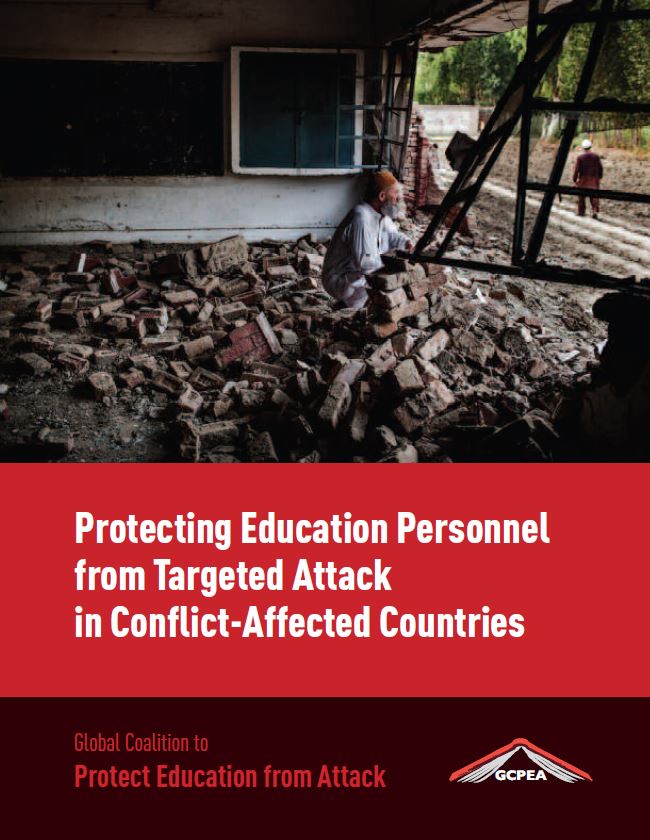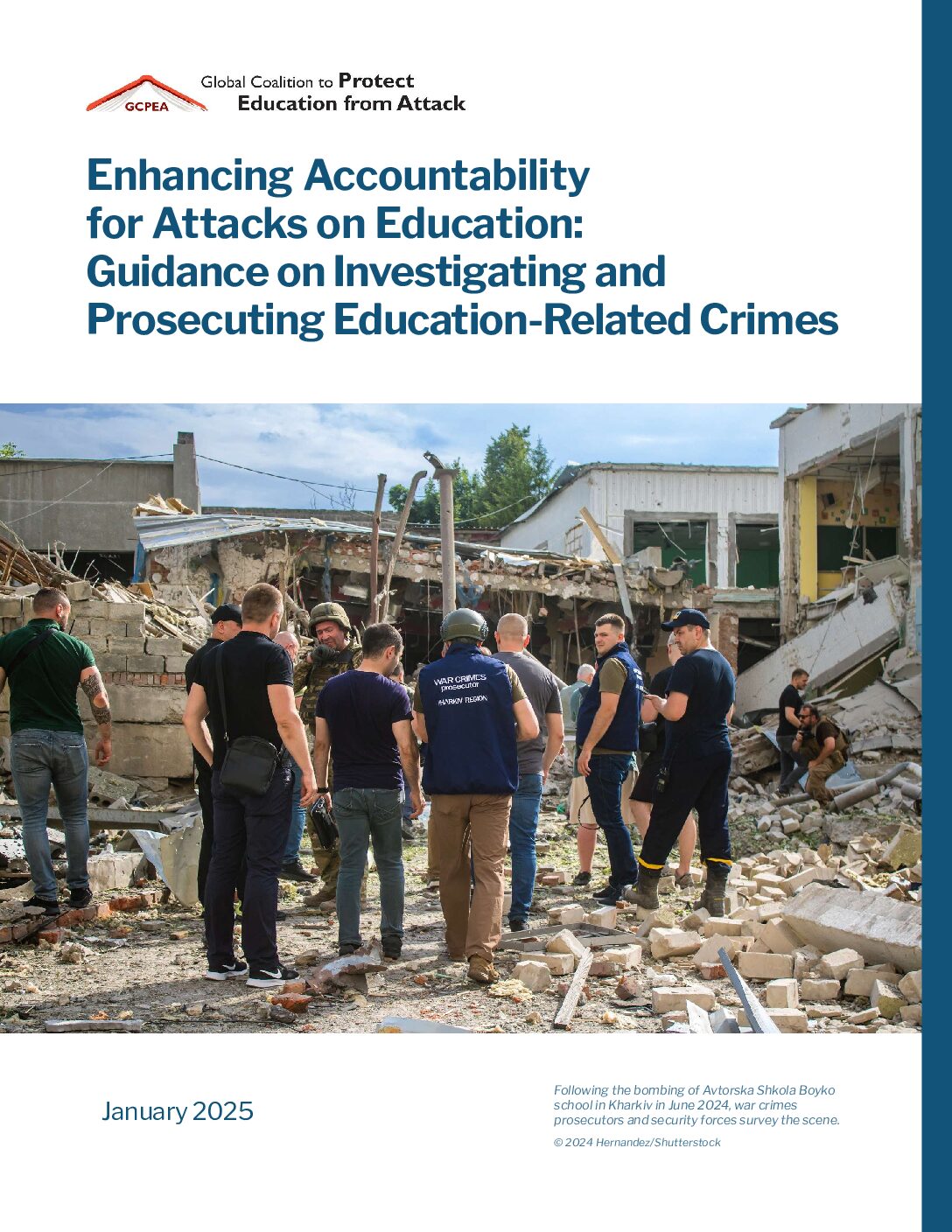GCPEA News
Teachers Under Attack
Why educators face wartime attacks and what can be done
Global Partnership for Education, August 20, 2014
Attacks on teachers and other educators are a disturbingly common tactic of war and a serious threat to education. In a recently released study, Protecting Education Personnel from Targeted Attack in Conflict-Affected Countries (download the report), the Global Coalition to Protect Education from Attack (GCPEA) describes how teachers have been targeted in armed conflicts around the world and documents various strategies to keep them safe.
We released the report on Malala Day—July 14, 2014—to recognize the courage of teachers who bring learning to war-torn communities and inspire their students, just as Malala Yousafzai has been inspired by her father, the former headmaster of her school. Drawing from interviews with global practitioners, documents from international and local organizations, and field research in the Philippines, the report highlights the devastating impact of violence against educators on individuals, communities, and education systems.
When teachers and professors are intimidated, injured, killed, or forced to flee, the short-term impact goes well beyond the victims, who can experience psychological harm, loss of income, and displacement.
Education access and quality also suffer, as the teaching force is depleted and schools are closed. In the longer term, attacks can discourage teachers from entering the profession. The Zimbabwe Teachers Association, for instance, estimates that 20,000 teachers have left the country in the past decade, due to a mixture of deteriorating education resources and political tension, including targeted attacks on teachers.
Why Are Teachers Targeted?
The motives behind attacks on teachers are diverse and context-specific, but there are common trends across countries affected by conflict.
Teachers can be targeted for resisting recruitment of children from schools into armed parties, for teaching girls, or for covering particular topics in their lessons and not others.
The curriculum is also an issue of contention in some communities. For instance, in southern Thailand, separatists have threatened and killed Thai Buddhist teachers in government schools partly because they believe the schools impose Buddhist culture and Thai language on ethnic Malay Muslim students.
Teachers can also be targeted because of their ethnicity, their association with the government or a warring party, their political activities, including serving as election monitors, or because they engage in education-related advocacy. In countries that were part of the ‘Arab spring’ upheavals, such as Bahrain, Egypt, Syria, Tunisia, and Yemen, education personnel have been targeted as part of a crackdown on pro-democracy voices. In the Philippines, education personnel are required to serve as poll workers during elections, so they are particularly vulnerable during voting periods. Ahead of the 2010 elections in Maguindanao, unidentified gunmen assassinated a principal and a teacher at an elementary school that is regularly used as a polling station.
Another barrier to education in conflict areas is the military use of schools or universities by armed forces or armed groups as bases, barracks, training grounds, firing positions, armories, and detention centers.
This practice can convert a school into a legitimate military target under international law, placing it and the students and teachers inside at risk of attack by opposing forces. Teachers in the Philippines have experienced harassment and attacks when schools were being occupied by armed parties, despite national laws prohibiting this practice.
What Can Be Done?
In an effort to end the military use of schools, GCPEA has coordinated an extensive consultation process to develop the draft Lucens Guidelines for Protecting Schools and Universities from Military Use during Armed Conflict. The Guidelines encourage responsible practice among states and non-state armed groups to reduce the use of education facilities for military purposes and minimize the negative impact of armed conflict on students and teachers. Last month, the government of Norway committed to leading the process to finalize the Guidelines and encourage other states to sign on and implement them in their military doctrine and training.
To date, 27 countries have publicly voiced their support.
Ministries and communities have tried different ways to protect teachers during conflict, ranging from physical protection, relocation of teachers to safer places, negotiation with armed parties to vacate schools, and advocacy for laws and policies that provide for better protection.
For example, in Pakistan, the government has provided travel allowances to enable female teachers to pay for safe public transportation to and from school. In 2008 in the Central African Republic, an agreement was reached with rebels to create neutral areas where teachers and students were safe and where children from displaced communities could take examinations. The report also highlights strategies to prevent attacks in the long-term, including increasing accountability and ending impunity for attacks, enacting protective legislation and policy, and developing conflict-sensitive education programs and policies.
While some protection approaches have been successful, there are also risks involved. The GCPEA report provides an analysis of the measures applied and their impact, as well as key factors to consider when devising a protection strategy, based on the experiences of selected countries. The lessons learned are intended to provide guidance to practitioners and policymakers to better ensure the safety of educators, who too often place their lives at risk simply by going to work and doing their job.
To learn more about the Global Coalition to Protect Education from Attack and our work, visit protectingeducation.org.





